What Was It Like When The First Stars Began Illuminating The Universe?
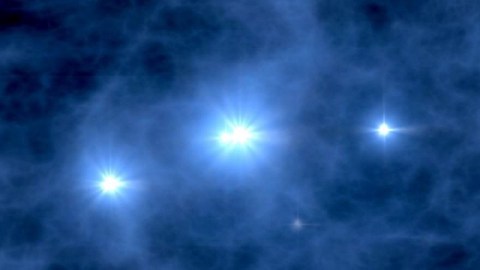
Shortly after the Big Bang, the Universe became completely dark. The first stars, when they ignited, changed everything.
For perhaps 100 million years, the Universe was devoid of stars. The matter in the Universe required just half a million years to form neutral atoms, but gravitation on cosmic scales is a slow process, made even more difficult by the high energies of the radiation the Universe was born with. As the Universe cooled, gravitation began to pull matter together into clumps and eventually clusters, growing faster and faster as more matter was attracted together.
Eventually, we reached the point where dense gas clouds could collapse, forming objects that were hot and massive enough to ignite nuclear fusion in their cores. When those first hydrogen-into-helium chain reactions began taking place, we could finally claim that the first stars had been born. Here’s what the Universe was like back then.

By time 50-to-100 million years have gone by, the Universe is no longer completely uniform, but has begun to form the great cosmic web under the cosmic influence of gravity. The initially overdense regions have grown and grown, attracting more and more matter to them over time. Meanwhile, the regions that began with a lower density of matter than average have been less able to hold onto it, giving it up to the denser regions.
The result is that the very densest regions begin forming stars, while the slightly less dense regions will get there eventually, but tens-to-hundreds of millions of years later. The regions of only a modest overdensity will take perhaps half-a-billion years or more to get there, while regions of just average density might not form stars until a couple of billion years have passed.
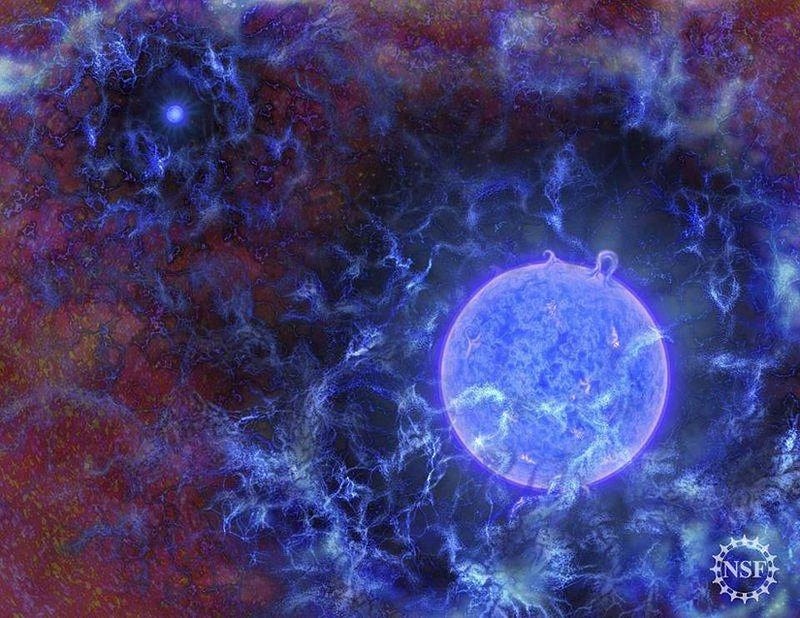
The very first stars, when they ignite, do so deep inside molecular clouds. They’re made almost exclusively of hydrogen and helium; with the exception of the approximately 1-part-in-a-billion of the Universe that’s lithium, there are no heavier elements at all. As gravitational collapse occurs, the energy gets trapped inside this gas, causing the proto-star to heat up.
It’s only when, under high-density conditions, the temperature crosses a critical threshold of around 4 million K, that nuclear fusion can begin. When that occurs, things start to get interesting.
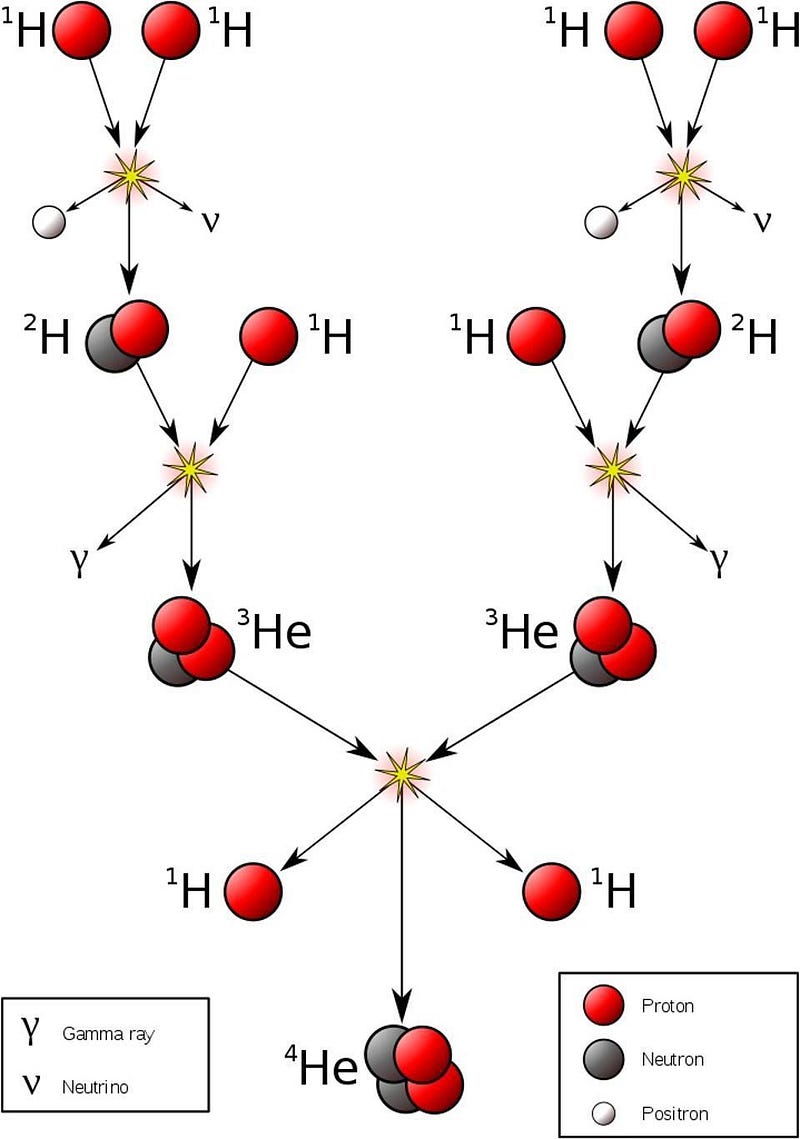
For one, the great cosmic race that will take place in all future star-forming regions begins for the first time in the Universe. As fusion begins in the core, the gravitational collapse that continues to grow the mass of the star is suddenly counteracted by the radiation pressure emanating from the inside.
At a subatomic level, protons are fusing in a chain reaction to form deuterium, then either tritium or helium-3, and then helium-4, emitting energy at every step. As the temperature rises in the core, the energy emitted increases, eventually fighting back again the infall of mass due to gravity.
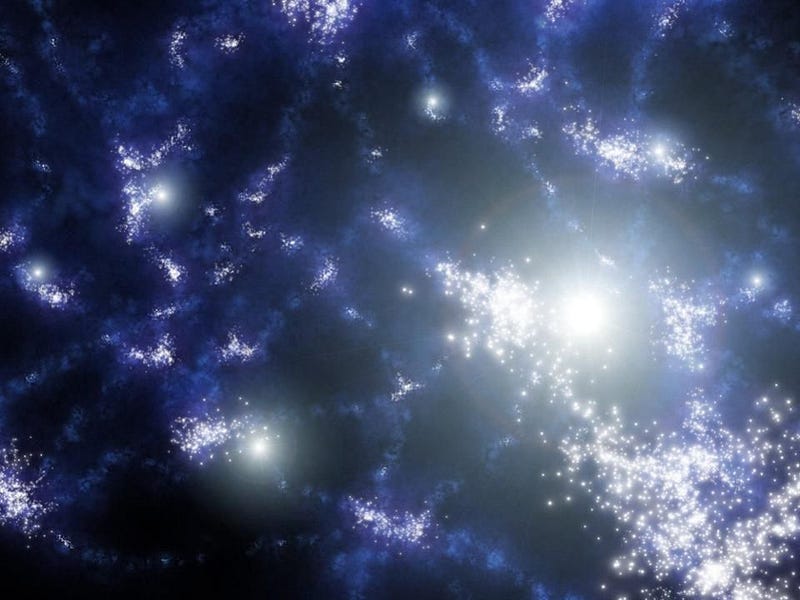
These earliest stars, much like modern stars, grow quickly due to gravitation. But unlike modern stars, they don’t have heavy elements in them, so they cannot cool as quickly; it’s more difficult to radiate energy away without heavy elements. Because you need to cool in order to collapse, this means it’s only the largest, most massive clumps that will lead to stars.
And so the first stars we form in the young Universe are about 10 times more massive than our Sun on average, with the most massive ones reaching many hundreds or even thousands of solar masses. (By comparison, the average star today is merely about 40% the mass of our Sun.)
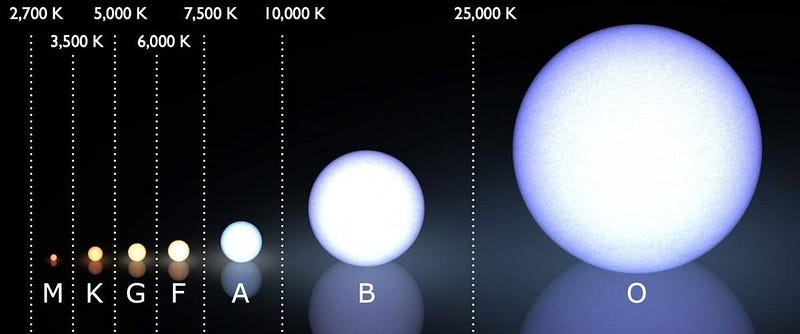
The radiation emitted by these very massive stars is peaked differently that our Sun is. While our Sun emits mostly visible light, these more massive, early stars emit predominantly ultraviolet light: higher energy photons than we typically have today. Ultraviolet photons don’t just give humans sunburns; they have enough energy to knock electrons clean off of the atoms they encounter: they ionize matter.
Since most of the Universe is made out of neutral atoms, with these first stars showing up in these clumpy clouds of gas, the first thing the light does is smash into the neutral atoms surrounding them. And the first things those atoms do is ionize: breaking apart into nuclei and free electrons, for the first time since the Universe was a few hundred thousand years old.

This process is known as reionization, since it’s the second time in the Universe’s history that atoms became ionized. However, because it takes so long for most of the Universe to form stars, there aren’t enough ultraviolet photons to ionize most of the matter just yet. For hundreds of millions of years, neutral atoms will dominate over the reionized ones. The starlight from the very first stars doesn’t get very far; it gets absorbed by the intervening neutral atoms almost everywhere. Some of them will scatter light, while others will become ionized again, which itself is interesting.
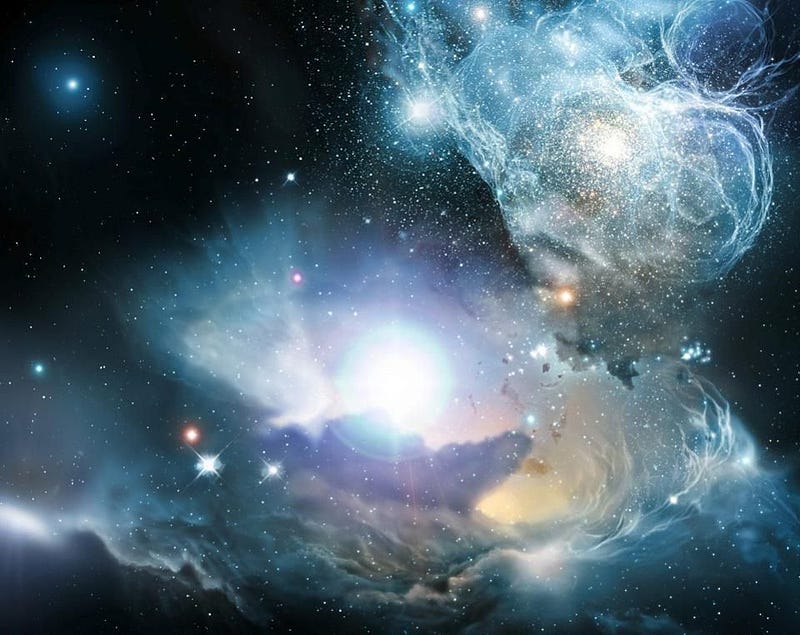
The ionization and the intense radiation pressure from the first stars forces star formation to cease shortly after it begins; most of the gas clouds that give rise to stars is blown apart, and evaporated away by this radiation. The matter that does remain collapses into a protoplanetary disk, just like it does today, but without any heavy elements, only diffuse, giant planets can form. The first stars of all couldn’t have hung onto small, rocky-size planets at all, as the radiation pressure would destroy them entirely.
The radiation doesn’t just destroy aspiring planets, it destroys atoms as well, by kicking electrons energetically off of the nuclei and sending them into the interstellar medium. But even that leads to another interesting part of the story.
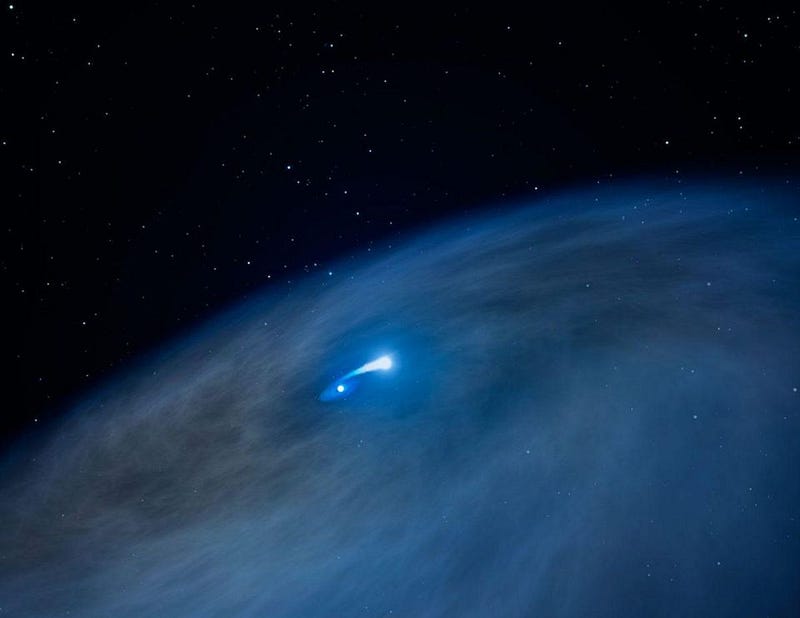
Whenever an atom becomes ionized, there’s a chance it will run into a free electron that was kicked off of another atom, leading to a new neutral atom. When neutral atoms form, their electrons cascade down in energy levels, emitting photons of different wavelengths as they do. The last of these lines is the strongest: the Lyman-alpha line, which contains the most energy. Some of the first light in the Universe that’s visible is this Lyman-alpha line, allowing astronomers to look for this signature wherever light exists.
The second-strongest line is the one that transitions from the third-lowest to the second-lowest energy level: the Balmer-alpha line. This line is interesting to us because it’s red in color, and visible to the human eye.
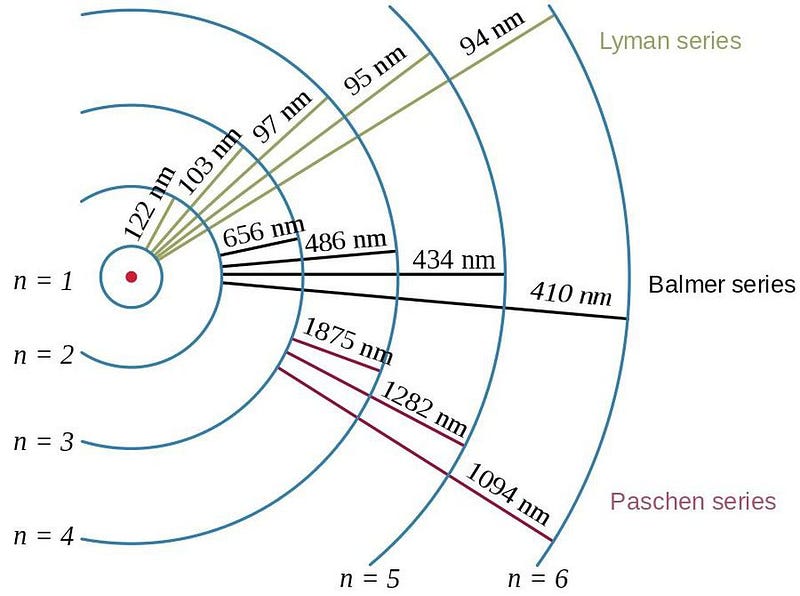
If a human were somehow magically transported to this early time, we’d see the diffuse glow of starlight, as seen through the fog of neutral atoms. But wherever the atoms became ionized in the environs surrounding these young star clusters, there would be a pinkish glow coming from them: a mix of the white light from the stars and the red glow from the Balmer-alpha line.
This signal is so strong that it’s visible even today, in environments like the Orion Nebula in the Milky Way.
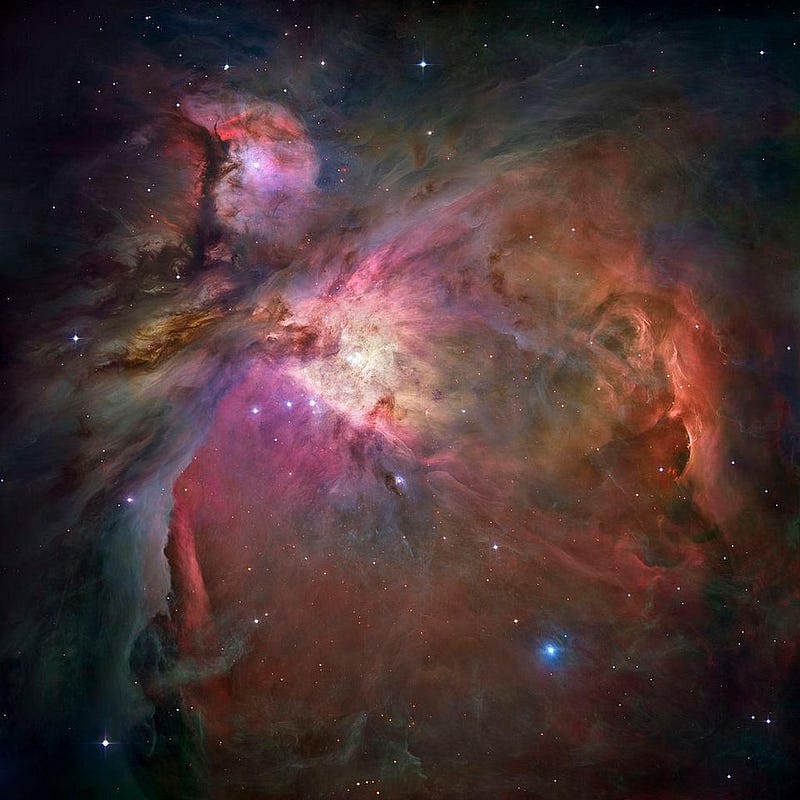
After the Big Bang, the Universe was dark for millions upon millions of years; after the glow of the Big Bang fades away, there’s nothing that human eyes could see. But when the first wave of star formation happens, growing in a cosmic crescendo across the visible Universe, starlight struggles to get out. The fog of neutral atoms permeating all of space absorbs most of it, but gets ionized in the process. Some of this reionized matter will become neutral again, emitting light when it does, including the 21-cm line over timescales of ~10 million years.
But it takes far more than the very first stars to truly turn on the lights in the Universe. For that, we need more than just the first stars; we need them to live, burn through their fuel, die, and give rise to so much more. The first stars aren’t the end; they’re the beginning of the cosmic story that gives rise to us.
Further reading on what the Universe was like when:
- What was it like when the Universe was inflating?
- What was it like when the Big Bang first began?
- What was it like when the Universe was at its hottest?
- What was it like when the Universe first created more matter than antimatter?
- What was it like when the Higgs gave mass to the Universe?
- What was it like when we first made protons and neutrons?
- What was it like when we lost the last of our antimatter?
- What was it like when the Universe made its first elements?
- What was it like when the Universe first made atoms?
- What was it like when there were no stars in the Universe?





